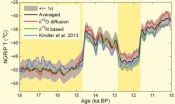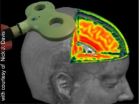(Press-News.org) Munich, Germany: Patients with COPD would like healthcare professionals to discuss palliative care needs in more detail, according to a new study.
Palliative care refers to care that is focused on making a person comfortable and relieving symptoms, rather than treating a condition. It is often connected with end-of-life care; although it can refer to any stage of care for any life-threatening condition.
The research, presented at the European Respiratory Society (ERS) International Congress in Munich today (7 September 2014), investigated the preferences of patients living with COPD.
A previous study by the same group identified the barriers that some healthcare professionals face in talking about palliative care. This research identified that one of the main reasons professionals avoid the conversation is because of a fear of destroying patients hopes for the future.
This study asked patients about this factor and assessed their perspective on discussions surrounding palliative care. Researchers conducted interviews with 12 patients who lived at home with COPD. The semi-structured interviews were then analysed descriptively.
The findings revealed that patients have many worries about the future of their condition but would like to discuss the disease and the management of their symptoms with healthcare professionals. The analysis of the interviews also showed that most patients felt uncomfortable bringing the topic of palliative care up with healthcare professionals and their families as they did not want to burden other people with their concerns.
The main outcome of the interview analysis was that patients felt that healthcare professionals should not be afraid to initiate conversations about palliative care as the patients themselves understood the condition was serious and required this type of conversation. They did not fear that discussions about this type of care could destroy their hopes for the future.
Camilla Mousing, lead author of the study from Aarhus University and VIA University College, said: "The findings of our research are very relevant for healthcare professionals working with patients with life-threatening illness. We have to overcome our fear of talking about this type of care and explain to patients that this does not mean we are giving up on them. Palliative care needs can be addressed from an early stage of an illness to ensure we are increasing the quality of everyday life for our patients. These needs can change on a daily basis for each patient and can be very different between patients. We must be flexible in our approach and ensure we know who is responsible for assessing and taking action."
INFORMATION: END
Patients call for health professionals to discuss care needs in life-threatening illnesses
2014-09-07
ELSE PRESS RELEASES FROM THIS DATE:
Mandatory policy boosts flu vaccination rates among health care workers
2014-09-07
DETROIT – Hospitals can greatly improve their flu vaccination rate among health care workers by using a mandatory employee vaccination policy, according to a Henry Ford Health System study.
Citing its own data, Henry Ford researchers say the health system achieved employee vaccination rates of 99 percent in the first two years of its mandatory policy, in which annual vaccination compliance is a condition of employment.
Nationally, 63 percent of health care workers were immunized against the flu in the past two years, according to the Centers for Disease Control and ...
New single-dose influenza drug appears safe and effective
2014-09-06
An analysis of phase 2 and phase 3 clinical trials shows that a single injected dose of the neuraminidase inhibitor (NAI) peramivir is safe and effective at alleviating influenza symptoms, including fever and viral shedding, when administered within 48 hours of the onset of symptoms. Researchers report their findings today at the 54th Interscience Conference on Antimicrobial Agents and Chemotherapy (ICAAC), an infectious diseases meeting of the American Society for Microbiology (ASM).
"Based on clinical data, peramivir is the first neuraminidase inhibitor (NAI) that ...
Antibiotic stewardship programs reduce costs, improve outcomes
2014-09-06
Antibiotic stewardship programs, which promote the appropriate use of antibiotics in hospitals and other healthcare centers, not only lead to reduction in antibiotic use with reduced adverse events, but also lead to significant savings. In the case of one New York hospital, more than $600,000 was saved annually, according to research presented today at the 54th Interscience Conference on Antimicrobial Agents and Chemotherapy (ICAAC), an infectious diseases meeting of the American Society for Microbiology (ASM).
"This work emphasizes the rational approach to treating patients: ...
New study reveals strong link between higher levels of pollution and lung health of European citizen
2014-09-06
New data has identified a clear link between higher levels of exposure to air pollution and deteriorating lung health in adult European citizens. This study confirms previous findings that children growing up in areas with higher levels of pollution will have lower levels of lung function and a higher risk of developing symptoms such as cough and bronchitis symptoms. Additionally, the new study identified that people suffering from obesity are particularly vulnerable to the negative effects of air pollution, possibly due to an increased risk of lung inflammation.
Senior ...
Penn team finds ovarian cancer oncogene in 'junk DNA'
2014-09-06
PHILADELPHIA - Over the years researchers have made tremendous strides in the understanding and treatment of cancer by searching genomes for links between genetic alterations and disease.
Most of those studies have focused on the portion of the human genome that encodes protein – a fraction that accounts for just 2 percent of human DNA overall. Yet the vast majority of genomic alterations associated with cancer lie outside protein-coding genes, in what traditionally has been derided as "junk DNA." Researchers today know that "junk DNA" is anything but – much of it is ...
Past temperature in Greenland adjusted
2014-09-05
One of the common perceptions about the climate is that the amount of carbon dioxide in the atmosphere, solar radiation and temperature follow each other – the more solar radiation and the more carbon dioxide, the hotter the temperature. This correlation is also seen in the Greenland ice cores that are drilled through the approximately three kilometer thick ice sheet. But during a period of several thousand years up until the last ice age ended approximately 12,000 years ago, this pattern did not fit and this was a mystery to researchers. Now researchers from the Niels ...
WHO-commissioned report on e-cigarettes misleading, say experts
2014-09-05
World leading tobacco experts argue that a recently published World Health Organization (WHO)-commissioned review of evidence on e-cigarettes contains important errors, misinterpretations and misrepresentations putting policy-makers and the public in danger of foregoing the potential public health benefits of e-cigarettes.
The authors, writing today in the journal Addiction, analyse the WHO-commissioned Background Paper on E-cigarettes, which looks to have been influential in the recently published WHO report calling for greater regulation of e-cigarettes.
Professor ...
Visualizing plastic changes to the brain
2014-09-05
Tinnitus, migraine, epilepsy, depression, schizophrenia, Alzheimer's: all these are examples of diseases with neurological causes, the treatment and study of which is more and more frequently being carried out by means of magnetic stimulation of the brain. However, the method's precise mechanisms of action have not, as yet, been fully understood. The work group headed by PD Dr Dirk Jancke from the Institut für Neuroinformatik was the first to succeed in illustrating the neuronal effects of this treatment method with high-res images.
Painless Therapy
Transcranial magnetic ...
Harvard and Cornell researchers develop untethered, autonomous soft robot
2014-09-05
New Rochelle, NY, September 4, 2014--Imagine a non-rigid, shape-changing robot that walks on four "legs," can operate without the constraints of a tether, and can function in a snowstorm, move through puddles of water, and even withstand limited exposure to flames. Harvard advanced materials chemist George Whitesides, PhD and colleagues describe the mobile, autonomous robot they have created in Soft Robotics, a peer-reviewed journal from Mary Ann Liebert, Inc., publishers. The article is available on the Soft Robotics website.
In "A Resilient, Untethered Soft Robot," ...
Study: Viral infection in nose can trigger middle ear infection
2014-09-05
WINSTON-SALEM, N.C. – Sept. 5, 2014 – Middle ear infections, which affect more than 85 percent of children under the age of 3, can be triggered by a viral infection in the nose rather than solely by a bacterial infection, according to researchers at Wake Forest Baptist Medical Center.
By simultaneously infecting the nose with a flu virus and a bacterium that is one of the leading causes of ear infections in children, the researchers found that the flu virus inflamed the nasal tissue and significantly increased both the number of bacteria and their propensity to travel ...




